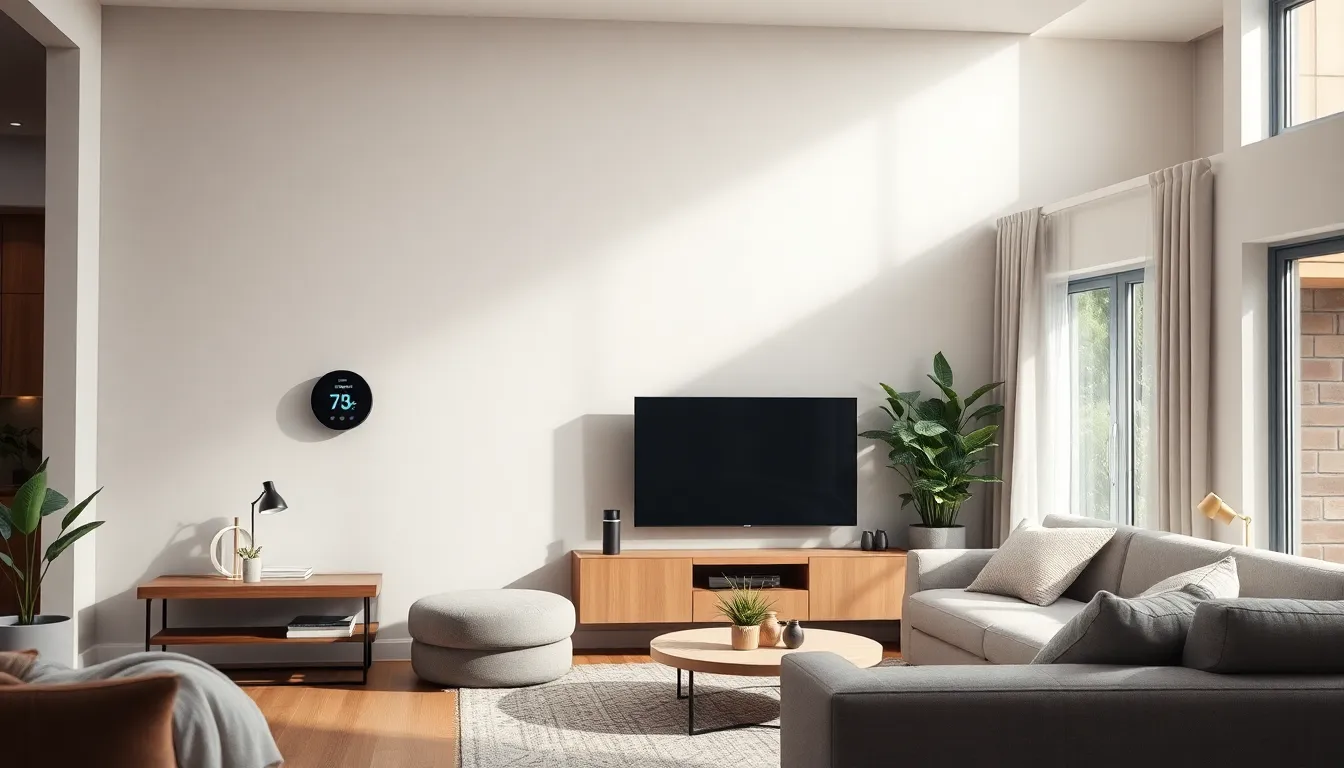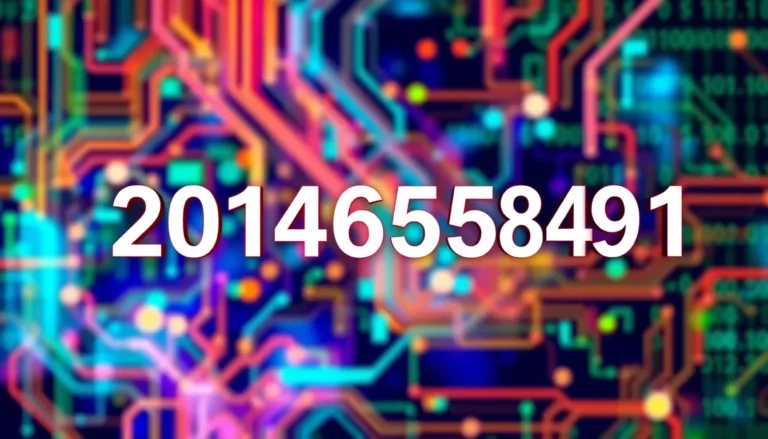Imagine a world where your fridge knows when you’re out of milk, your car orders its own oil change, and your coffee maker brews the perfect cup just as you wake up. Welcome to the future of the Internet of Things (IoT), where everyday objects become smart companions that make life easier and a bit more entertaining.
Table of Contents
ToggleOverview of IoT
The Internet of Things (IoT) refers to a network of interconnected devices that communicate and exchange data. These devices enhance automation and efficiency in various sectors. Smart home devices, for instance, allow residents to control lighting, heating, and security systems remotely.
Manufacturing sectors implement IoT to optimize operations through real-time monitoring and predictive maintenance. Sensors and devices track machinery performance, reducing downtime and preventing failures. Various applications exist, ranging from agriculture to healthcare, underscoring IoT’s versatility.
Data generated by IoT devices is immense. By analyzing this data, businesses gain insights that promote better decision-making. Companies leverage IoT analytics to improve customer experiences and develop new products. This capability creates a significant competitive advantage in the market.
Security and privacy concerns accompany IoT’s rapid expansion. Manufacturers prioritize developing robust security protocols to protect user data. Effective solutions include encryption and secure communication channels that help mitigate risks.
Challenges also arise with standardization across different IoT platforms. Interoperability between devices ensures a seamless user experience. Initiatives aimed at establishing industry standards are ongoing, promoting compatibility among devices.
Scalability remains crucial for widespread IoT adoption. Companies focus on quantifying benefits while managing infrastructure costs. Innovative cloud solutions support the growing number of devices, enabling efficient data storage and processing.
The future promises significant advancements in IoT technology. Emerging trends include AI integration, leading to smarter and more autonomous systems. As IoT evolves, its impact on daily life will deepen, transforming how people interact with technology.
Current Trends in IoT

Current trends in IoT show significant evolution across various sectors. Emerging technologies are reshaping how devices communicate and function.
Smart Home Technology
Smart home technology continues to advance rapidly. Devices like smart speakers, thermostats, and security cameras enhance the convenience of everyday living. Connected appliances enable seamless control and automation, improving energy efficiency. For instance, smart lighting systems adjust brightness based on user habits. Homeowners benefit from using mobile apps that monitor and control these devices remotely. Increased consumer interest drives manufacturers to develop innovative features, making smart homes more user-friendly.
Industrial IoT Developments
Industrial IoT developments demonstrate improvements in manufacturing and logistics. Connectivity among machines allows for real-time data collection and analysis. Predictive maintenance reduces downtime, saving companies time and resources. Sensors monitor equipment health, identifying potential issues before they escalate. Industries leverage IoT platforms to streamline operations and enhance supply chain efficiency. As businesses adopt these technologies, they experience increased productivity and reduced operational costs. Enhanced integration of IoT in industry signifies a shift towards smarter manufacturing processes.
Challenges Facing the Future of IoT
The future of IoT faces several challenges that could hinder its progress and adoption. Two significant areas of concern are security and scalability.
Security Concerns
Security remains a top priority as IoT devices proliferate. Many devices collect sensitive personal data, making them targets for cyberattacks. According to a report by McKinsey, 90% of IoT devices lack adequate security features. This vulnerability creates opportunities for data breaches and unauthorized access. Manufacturers must prioritize robust security measures, such as encryption and regular software updates, to mitigate risks. Furthermore, users should approach IoT adoption with caution, ensuring devices come from reputable sources. As the landscape evolves, collaboration between tech companies and cybersecurity experts will become crucial in developing effective strategies to maintain user trust.
Scalability Issues
Scalability presents another challenge for IoT growth. With increasing numbers of connected devices, managing infrastructure becomes complex. Companies often struggle to balance system performance and operational costs. According to Gartner, nearly 50 billion devices could connect by 2030, amplifying the need for efficient data processing and storage solutions. Innovative cloud technologies must support these demands by providing flexible resources. Organizations that invest in scalable architectures can better accommodate future expansion and evolving market needs. Industry collaboration is essential to establish standards that promote interoperability, ensuring seamless communication between diverse devices. Focusing on scalability will empower companies to harness the full potential of IoT advancements.
Innovations Shaping the Future of IoT
Innovations are continuously transforming the landscape of the Internet of Things. Two major advancements are artificial intelligence integration and edge computing.
Artificial Intelligence Integration
Artificial Intelligence enhances the functionality of IoT devices. Through data analysis, AI enables devices to learn from user behavior, improving automation and customization. Smart home devices, such as thermostats and lights, adjust settings based on usage patterns, enhancing energy efficiency. Manufacturing processes benefit from AI, using predictive analytics to anticipate equipment failures, ultimately increasing productivity. A report by PwC states that AI applications in IoT could generate $15 trillion in economic value globally by 2030, highlighting the significant impact of this integration on future innovations.
Edge Computing Advances
Edge computing addresses latency issues associated with cloud processing. By processing data closer to the source, devices can make real-time decisions without relying heavily on cloud servers. For instance, smart cameras analyze video feeds on-site, improving response times for security systems. The potential of edge computing focuses on reducing bandwidth usage and enhancing speed, crucial for applications requiring instant feedback. Statista projects that the global edge computing market will reach $43.4 billion by 2027, indicating a substantial shift towards this technology in the IoT landscape.
The Role of 5G in IoT Expansion
5G technology plays a pivotal role in the expansion of IoT by providing faster data transfer speeds and lower latency. With download speeds reaching up to 10 Gbps, 5G allows IoT devices to communicate almost instantaneously, enabling seamless operations.
Latency, typically under 1 millisecond, ensures real-time data processing across diverse applications. This level of responsiveness benefits sectors from healthcare to manufacturing, as instantaneous data sharing enhances decision-making processes. For example, in smart healthcare, high-speed connectivity permits remote surgeries where specialists operate on patients in real-time.
Capacity also sees significant improvement with 5G, accommodating up to 1 million devices per square kilometer. This capability addresses the growing number of connected devices, crucial as projections suggest nearly 50 billion devices will be online by 2030. Urban environments, in particular, should optimize smart city applications through enhanced connectivity.
Energy efficiency maximizes benefits with 5G, allowing devices to transmit data using minimal power. This efficiency extends battery life, crucial for wearable technology and other portable IoT devices. Reports indicate that connected devices can experience a 10-year longer battery life with 5G technology.
Security features within 5G networks also advance IoT expansion. Enhanced encryption methods and network slicing improve data protection, crucial in an era where 90% of IoT devices face security vulnerabilities. Manufacturers prioritize implementing robust security measures to protect user data.
As 5G networks continue to roll out globally, collaboration within the tech industry will shape IoT applications. Various sectors should leverage this technology to drive innovation and maximize efficiency, underscoring the transformative potential of 5G in the future of IoT.
The future of IoT is poised for remarkable transformation as technology continues to evolve. With advancements in AI and edge computing, devices will become smarter and more efficient, enhancing user experiences across various sectors. The integration of 5G technology will further accelerate this growth, enabling seamless communication between countless connected devices.
While challenges such as security and scalability remain, ongoing efforts within the industry aim to establish standards and protocols that ensure safe and efficient IoT deployment. As innovation drives the landscape forward, the potential for IoT to revolutionize daily life and industry practices is immense. Embracing these changes will unlock new opportunities for convenience and productivity in the years to come.



